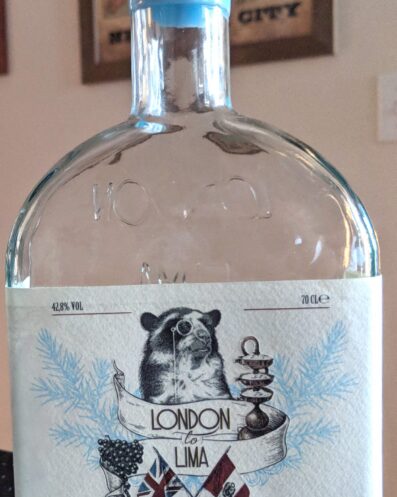“It’s called London to Lima because of my journey,” Alex began, “I was trying to work out what the hell I wanted to do in my life. I wanted to find something that I was passionate about.” His passion quest took him and his family from the bustling city of London, England to the jungles and plateaus of Peru.
Distiller Alexander James’ interest in native Peruvian botanicals was inspired by his time working in agri-forestry, the science of integrating crop plants and native plants into holistic, mutually beneficial systems. While working in Peru, Alex says, “I came across some really cool stuff… the abundance of plants is endless really. There’s all sorts of things to follow up on, barks, saps, flowers.” While some of these “cool” things may make an appearance in future London to Lima products, for their flagship gin, Alex says “I was looking for some of the more renowned, typically Peruvian botanicals.”
For the rest of the piece, subscribe to Gin Magazine where my entire interview with Alex and his story appeared in Summer 2018.
London to Lima gin is built on a base spirit of Pisco. The botanicals emphasize local Peruvian culture and tell the story of Alex’s journey.
Tasting Notes
Lots of citrus on the nose— lime zest and sweet orange with a slight anise touched spice note and hint of hay hovering in the background.
London to Lima’s nose is quite complex with a lot of working parts. It’s almost too brief to summarize it in the one sentence above. Certainly London to Lima Gin leads with a lot of citrus. I get hints of lime leaves, lime zest and a sweeter hint of mandarin orange.
The underlying spice/herbal note is a bit more difficult to place so exactly. At first nose it suggests anise or myrtle anise, but there’s echoes of dried toasted coriander, piperine-like menthol, and a grassy, slightly hay-like note suggestive of apple brandy.
The palate is moderately more-traditional— juniper is present, but it’s a creamy note of pink peppercorn and the base Pisco that is worthy of remark.
I think the palate is where London to Lima Gin shows off the full Peruvian story that Alex wanted to tell. Albeit subtly— the entire palate has a background note of Pisco. But if you’re expecting full throttle Pisco, you’re looking in the wrong place. It’s like Pisco sipped with an ice cube, but the ice cube is pretty much entirely melted. The quality of the flavor is still there, but it’s muted.
Botanically, there’s a lot of spicy notes early. Black pepper, coriander seed, cinnamon bark, and crushed juniper rush back from the tongue to the throat where there’s a lot of botanical warmth.
Mid-palate London to Lima Gin becomes a bit more citrusy. Orange and lime zest come through with a bitter note, with a slight cranberry-like bitterness. Pink peppercorn emerges from the spice melange at first taste and becomes the somewhat dominant note in a very peppery finish.
The finish is moderate in length with notes of black peppercorn and Pisco.
Cocktails
London to Lima Gin has a lovely, smooth texture and is nicely complemented by other herbal spirits. Green Chartreuse + London to Lima Gin makes a nice Last Word, while the sweet creaminess of the Yellow Chartreuse makes for an excellent Alaska Cocktail.
Overall, it’s a great gin for making cocktails where you want that bit of pink peppercorn spice. Other recommendations include The Negroni and the Monkey Gland.
Overall
London to Lima Gin is a great example of how things that might seem outside of the normal gin box (i.e. a Pisco base spirit) can work well in the context of a gin that considers the base spirit carefully for the flavor it brings.
Highly Recommended


This week, I have visited Alex to try some of his Gin. Having mixed cocktails for 40 years, I expected myself to put in, at least, some Tonic Water. However, I could not do it after having tried this firework of nuances. To me, this Gin is too interesting to be mixed with other ingredients. Maybe, I shall become more willing to do some experiments in the future – until then, I shall enjoy this extraordinary composition as it is …